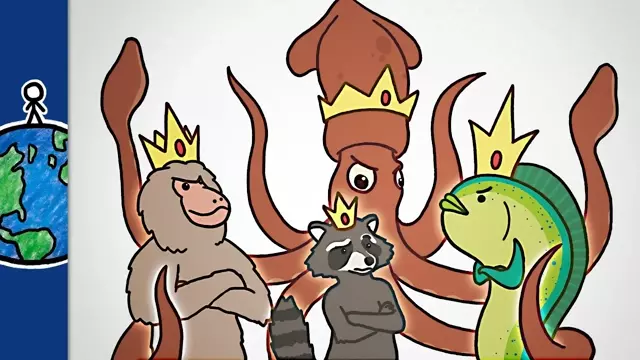2018-06-14
[public] 1.51M views, 26.5K likes, dislikes audio only
Thanks to humans, old school apex predators are struggling to hold onto their perch at the top of the food chain. And now a new class of adaptable mesopredators are remaking the ecosystems they take over.
To see song lyrics, click "CC" on the video or, for an annotated version, click here: https://genius.com/14774391
If you liked this week’s video, you might also like:
ScienceWithTom goes deep on the science in this video with ecologist Alex McInturff: https://youtu.be/TJcgtqjj-yo
LEARN MORE
**************
To learn more about this topic, start your googling with these keywords:
- Food Web: the feeding relationships between animals that determine how energy and nutrients are spread throughout an ecosystem.
- Trophic Level: a hierarchical level in an ecosystem made up of organisms that share the same function in the food web.
- Apex predator: the animals at the top trophic level that feed on animals and organisms below them.
- Mesopredator: a member of a mid-ranking trophic level that preys on animals and organisms in lower trophic levels and occasionally gets eat by apex predators.
- Mesopredator Release: an ecological phenomenon in which mesopredators rapidly grow in population once apex predators are removed from an ecosystem.
- Trophic Cascade: a series of dramatic changes in an ecosystem often triggered by mesopredator release.
CREDITS
*********
Script Writer: Tom McFadden
Script Editor: David Goldenberg
Video Illustrator: Qingyang Chen
Video Director: David Goldenberg, Emily Elert
Video Narrator: Emily Elert, Tom McFadden
With Contributions From: Henry Reich, Alex Reich, Kate Yoshida, Ever Salazar, Emily Elert, Peter Reich
Music by: Nathaniel Schroeder
SUPPORT MINUTEEARTH
**************************
If you like what we do, you can help us!:
- Become our patron: https://patreon.com/MinuteEarth
- Our merch: http://dftba.com/minuteearth
- Our book: https://minuteearth.com/books
- Share this video with your friends and family
- Leave us a comment (we read them!)
OUR LINKS
************
Youtube | https://youtube.com/MinuteEarth
TikTok | https://tiktok.com/@minuteearth
Twitter | https://twitter.com/MinuteEarth
Instagram | https://instagram.com/minute_earth
Facebook | https://facebook.com/Minuteearth
Website | https://minuteearth.com
Apple Podcasts| https://podcasts.apple.com/us/podcast/minuteearth/id649211176
REFERENCES
**************
Darimont, C., Fox, C., Bryan, H., and Reimchen, C. (2015). The Unique Ecology of Human Predators. Science. 349: 6250 (858-860). Retrieved from: http://science.sciencemag.org/content/349/6250/858
Prugh, L., Stoner, C., Epps, C., Bean, W., Ripple, W., Laliberte, A. and Brashares, J. (2009). The Rise of the Mesopredator. BioScience. 59:9 (779-791). Retrieved from: https://www.jstor.org/stable/10.1525/bio.2009.59.9.9
Baum, J. and Worm, B. (2009). Cascading Top-down Effects of Changing Oceanic Predator Abundances (2009). Journal of Animal Ecology. 78: 699-714. Retrieved from: https://www.ncbi.nlm.nih.gov/pubmed/19298616
McInturff, Alex. (2018). Personal Communication. Department of Environmental Science, Policy, and Management at University of California, Berkeley.
/youtube/video/4LDGzXpei8k
/youtube/channel/UCeiYXex_fwgYDonaTcSIk6w
https://www.patreon.com/minuteearth
youtube.com/watch?v=TJcgtqjj-yo

